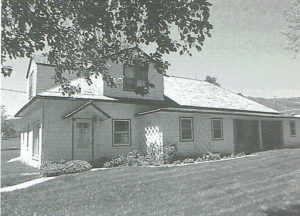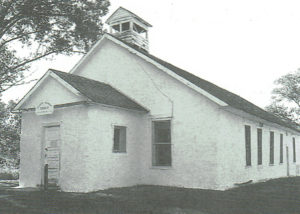History of straw bale construction
Straw baling was born towards the end of the 19th century. In the 1890s, the first practical straw balers were developed in the USA, -encouraged by the refusal of railroad companies to transport loose straw and hay. In the Nebraska area and surrounding U.S. states, there were few available building materials for settlers at the time, but a strong need for housing for newcomers.

Nebraska 1900-14
In other regions, there was mostly wood, clay or easily worked natural stones. When the first pressed straw bales were lying in the fields, the idea of using them as masonry bricks was very obvious to the settlers, most of whom came from Europe, especially since they even had, or still have, roughly the same aspect ratios as old solid bricks. Thus, people began to mason the straw bales like masonry bricks in bond. Roof, doors and windows were built in wood. At first, the buildings constructed in this way were supposed to be only temporary, but when the inhabitants began to plaster their initially unplastered houses, it turned out that it worked quite well as a permanent solution. Most of the historic thatched houses in the U.S. were built between 1915-30, and some of them are even standing intact today!

Nebraska 1928
During and immediately after World War II, there was also a brief period in Europe when straw bales were used in house construction. The best known from this period are several buildings in France and the Netherlands.
Due to its origin, the load-bearing construction method is also called Nebraska style.
With the emergence of the chemical industry, which began to conquer more and more the construction sector with a monopoly claim, the straw bale construction, -like other natural building materials and construction methods, fell somewhat into oblivion and was partly also considered a "poor man's construction method".
At the beginning of the 1980s, this construction method was rediscovered and boomed in the USA by pioneers such as David Eisenberg, Matts Myhrman and the Steen couple. Old techniques were revived and further developed. The uptake and spread was also greatly aided by the American tradition of "owner builders". For generations, many Americans have been building their houses themselves, and even today they have more options under building law than in Europe. The USA is one of the few countries that has its own building code for load-bearing straw construction.
This construction method came to Europe at the beginning of the 1990s. Countries where straw bale construction gained relatively fast acceptance (also in terms of building laws) are the British Isles, but also Holland, France and Denmark. Germany, Austria and Switzerland now also have a lively straw bale building scene, which is in the process of becoming better organized and professionalized. In most countries there are now straw dealers who supply certified building straw bales, which has also significantly simplified the building law situation. In contrast to many other countries, in Austria and Germany straw bales are mainly used in house construction with wooden post and beam construction. Small bales, standing or lying, are predominantly used here. When load-bearing structures are built, jumbo bales are used in the majority of cases, and the classic small bales are used less frequently.